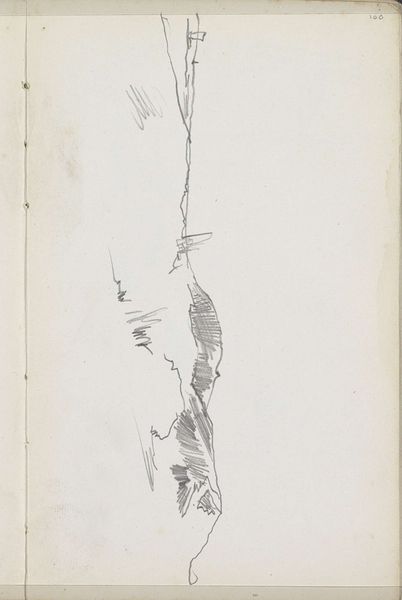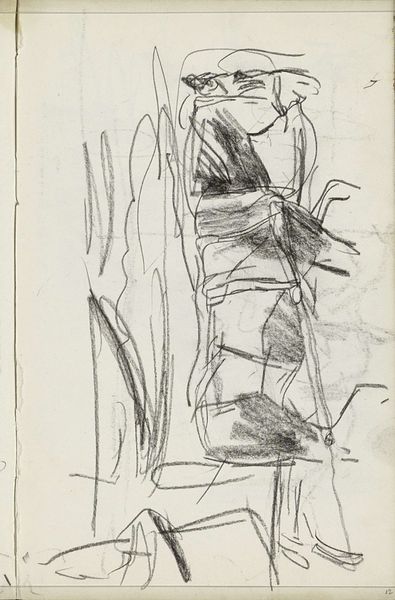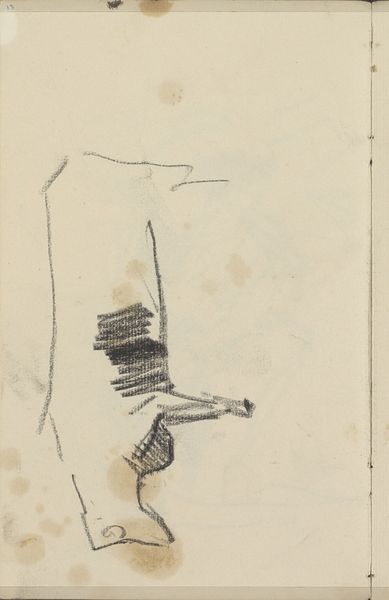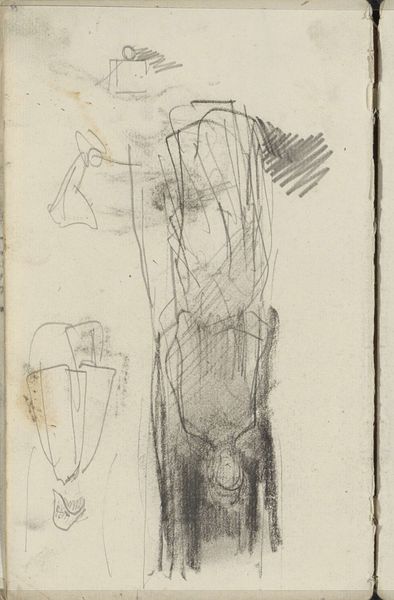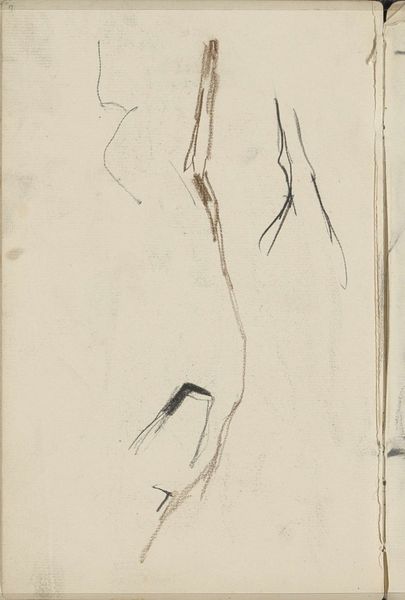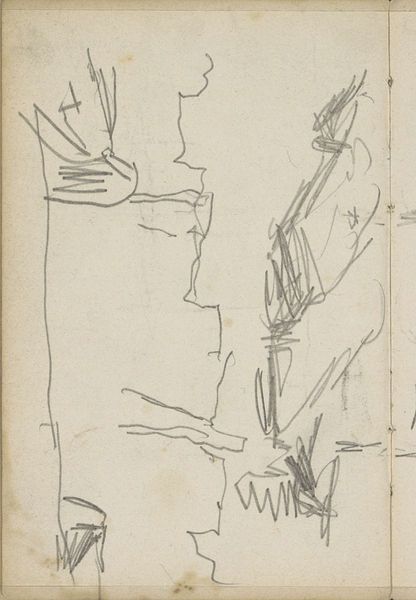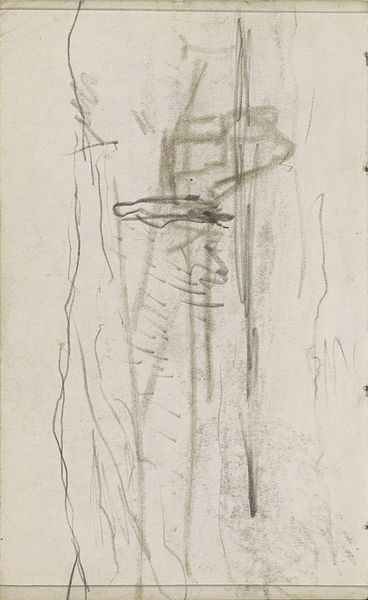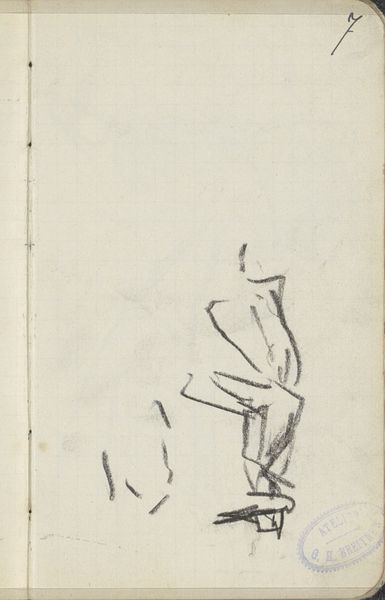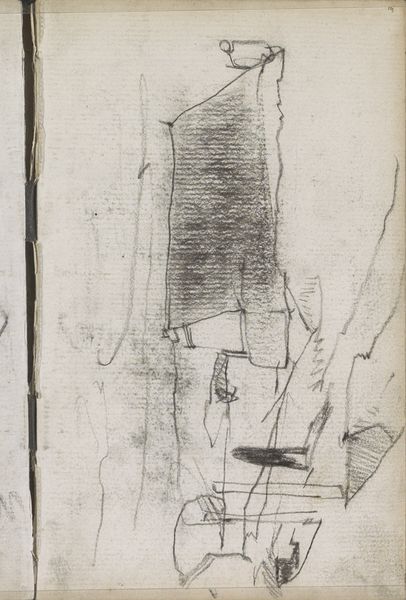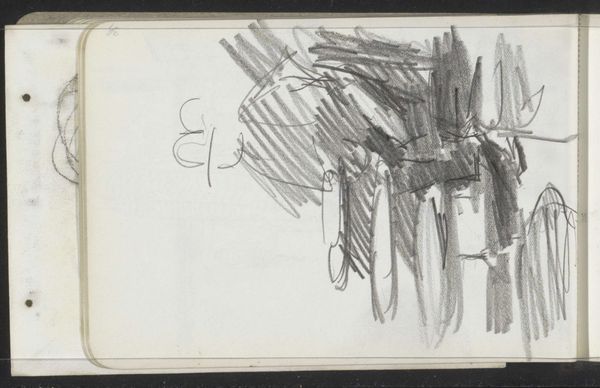
drawing, pencil
#
drawing
#
impressionism
#
landscape
#
form
#
pencil
#
line
#
northern-renaissance
Copyright: Rijks Museum: Open Domain
Editor: Here we have "Landschap, mogelijk een duinlandschap," or Landscape, possibly a dune landscape, a pencil drawing by George Hendrik Breitner, from around 1880 to 1882. It has such an unfinished quality. What do you see in this piece that might go beyond its initial appearance? Curator: Well, let's think about the material conditions. It's pencil on paper, immediate, portable. But what does that imply? For me, this piece invites us to consider artistic labour and its relationship to observation. Breitner isn’t just representing a landscape; he’s enacting a process of seeing and recording, mediated by readily available materials. Notice how the hasty lines and smudges convey the fleeting qualities of light and atmosphere. How might this sketch relate to broader shifts in artistic production during that period? Editor: It feels very… preparatory. Were artists starting to prioritize the process of creation as much as, or more than, the finished product? Curator: Exactly! The rise of industrialization changed material culture. Things were more accessible and art became more about exploring the potential of these materials and the artist's own immediate experience with the subject matter. Do you think the unfinished look impacts its value as art? Does it challenge conventional definitions of 'high art?' Editor: It does, in a way. Because we're not looking at a perfectly rendered landscape, but rather the artist's engagement with it. Maybe the real art is the seeing and sketching process itself! Curator: Precisely. It highlights how the artist shapes the raw materials to deliver something meaningful. In focusing on that artistic work, this drawing challenges us to look past what we *think* a landscape should be. Editor: I’ve never thought about landscape in terms of labor. It definitely changes my perspective! Thanks! Curator: It has been a fruitful exchange. Approaching art from the angle of materials can tell us about the art's role within a system of social and economic values.
Comments
No comments
Be the first to comment and join the conversation on the ultimate creative platform.
